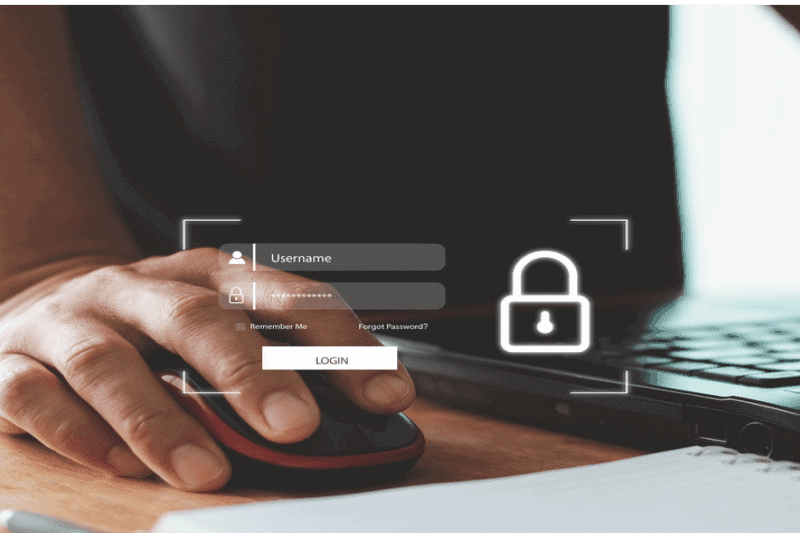What Is Banking Fraud?
Banking fraud refers to illegal activities aimed at gaining unauthorized access to bank accounts, personal information or financial data, with the intention of stealing money, compromising sensitive information or conducting other illicit activities.
Why Is Banking Fraud a Growing Concern?
Banking fraud has become a serious concern as fraudsters have developed more sophisticated ways to exploit vulnerabilities in digital systems. The increasing reliance on online banking and digital transactions creates opportunities for fraudsters to target financial institutions and customers, leading to significant financial losses and reputational damage. With advanced tools like bots and social engineering, the risk is more pervasive than ever, making it crucial for banks to stay vigilant.
How Does Banking Fraud Impact Financial Institutions and Customers?
For banks, fraud leads to financial losses, extra costs for investigations and even legal trouble. It also damages the bank's reputation, causing customers to lose trust. On the customer side, fraud often means stolen identities, lost money and damaged credit scores, creating stress and financial difficulties. Restoring security and recovering losses can take time and effort for both parties.
What Is Account Takeover Fraud in Banking?
How Do Attackers Gain Unauthorized Access to Bank Accounts?
Attackers typically gain access to bank accounts through phishing schemes, social engineering or by exploiting weaknesses in online systems. They often trick users into giving up personal details like passwords or banking information. Other methods include brute-force attacks, credential stuffing and session hijacking, where attackers intercept a user's online banking session to take control of the account.
How Can Financial Institutions Detect Account Takeover Attempts?
To detect account takeover attempts, financial institutions use technologies like behavior analytics and machine learning. By monitoring login patterns, device usage and transaction behaviors, banks can spot suspicious activity such as failed login attempts from unusual locations or unexpected changes to account settings. Early detection helps prevent fraud before significant damage is done. Learn more about account takeover in our blog.
Learn about Arkose Labs account takeover detection & mitigation software.
What Is New Account Fraud in Banking?
New account fraud in banking occurs when attackers create fake accounts using stolen or synthetic identities. These accounts are then used for fraudulent transactions, money laundering, or exploiting credit lines. Fraudsters often rely on data breaches or purchasing stolen identities to open new accounts and disguise their criminal activities.
What Are the Risks Associated with Banking New Account Fraud?
New account fraud in banking can expose financial institutions to several risks. Here are the main challenges associated with it:
- Financial Losses: Fraudulent transactions lead to direct monetary losses for both banks and customers.
- Money Laundering: Criminals can use fake accounts to move illegal funds.
- Reputational Damage: Fraud incidents can hurt customer trust.
- Regulatory Penalties: Banks may face legal action for not preventing fraud.
- Operational Costs: Resources are required to manage fraud cases and upgrade security measures.
- Difficulty in Detection: Fraudsters use sophisticated tactics that complicate detection efforts.
What Is Online Banking Fraud?
Online banking fraud involves unauthorized actions on digital banking platforms that result in financial theft or manipulation. Below are some key aspects of online banking fraud:
What Are the Common Types of Online Banking Fraud?
- Phishing: Trick users into revealing sensitive information via fake websites or emails.
- Account Takeover: Hackers gain access to bank accounts through stolen credentials.
- Identity Theft: Criminals use stolen personal information to open fraudulent accounts.
- Man-in-the-Middle Attacks: Interception of communications between users and banks to steal information.
How Do Fraudsters Use Phishing and Social Engineering in Online Banking Fraud?
Phishing and social engineering scams deceive users into sharing personal data. Fraudsters impersonate banks or send fake communications to trick individuals into giving up credentials, which are then used for unauthorized access and transactions.
How Do Bots Contribute to Online Banking Fraud?
Bots automate fraudulent activities at scale, enabling attackers to launch credential stuffing attacks, carry out brute-force logins, and execute fraudulent transactions, often outpacing manual fraud detection methods.
How Can Financial Institutions Detect and Prevent Online Banking Fraud?
Financial institutions can detect and prevent fraud by implementing real-time monitoring, anomaly detection and behavioral analysis to flag suspicious activities. Multi-factor authentication (MFA) adds extra layers of protection. Solutions like Arkose Labs' bot detection and mitigation software help financial institutions prevent automated attacks by analyzing user behavior and identifying fraud attempts early.
What Role Do Bots Play in Online Banking Fraud, and How Can They Be Mitigated?
Bots are often used for large-scale credential stuffing and account takeover attempts. By automating attacks, bots enable fraudsters to scale operations quickly. Mitigating these threats requires bot detection software, such as Arkose Labs' Bot Manager, which stops automated bot-driven fraud activities in real time.
How Can Customers Protect Themselves From Online Banking Fraud?
Customers can protect themselves by practicing secure online behaviors, such as enabling multi-factor authentication, avoiding public Wi-Fi for banking, and staying vigilant for phishing scams. Regularly updating passwords and monitoring accounts for suspicious activity are also key defensive actions.
What Is the Role of Behavioral Analytics in Fraud Prevention?
Behavioral analytics tracks users’ behaviors, such as transaction history and device usage, to spot deviations from normal activity. By understanding typical behavior, it can flag suspicious actions that may indicate fraud.
How Can Biometric Authentication Strengthen Security?
Biometric authentication enhances security by using unique physical traits like fingerprints or facial recognition. This makes it more difficult for fraudsters to gain unauthorized access, as biometrics are harder to replicate than passwords.
What Is the Importance of Multi-Factor Authentication in Banking Security?
Multi-factor authentication (MFA) strengthens security by requiring users to verify their identity through multiple methods, such as passwords and a second factor like a one-time passcode (OTP) or biometric scan. This adds an extra layer of protection, reducing the risk of unauthorized access.
Industry-Specific Challenges in Banking Fraud
Each financial sector faces unique fraud risks based on the services it provides and the customers it serves. Here’s how fraud can differ across various banking industries:
How Does Banking Fraud Differ Across Various Financial Sectors?
Fraud tactics vary in different sectors. Retail banks encounter fraud like account takeovers, while investment firms may see insider trading or wire fraud. Each sector requires tailored fraud prevention strategies.
How Does Fraud Impact Traditional Banks Versus Online-Only Banks?
Traditional banks face a blend of physical and digital fraud, while online-only banks focus entirely on preventing cyber-based fraud schemes. Online banks are often targeted by phishing attacks, credential stuffing and other digital fraud tactics.
Case Studies and Real-World Examples
What Are Some Notable Cases of Banking Fraud?
Case Study: Global Bank Secures Customer Data and Prevents ATO Attacks
A leading global bank that manages over $1 trillion in assets faced increasing threats from sophisticated cybercriminals using bots for ATO and new account fraud. But its legacy security systems, including text-based CAPTCHAs, were ineffective, which led to a rise in automated attacks and friction for legitimate customers.
The bank implemented the Arkose Bot Manager detection and mitigation solution, drastically reducing automated attacks while maintaining a seamless user experience. The results? Improved fraud prevention, stronger regulatory compliance and a safer, more streamlined banking experience for customers.
Case Study: Large U.S. Bank Saves Six Figures
One of the largest U.S. banks faced a surge in bot-driven account takeover attacks and a growing volume of unknown session traffic, despite using a layered security stack. These issues compromised customer trust and led to costly downstream fraud detection efforts. After implementing the bot detection and mitigation solution Arkose Bot Manager, the bank saw an immediate reduction in bot attacks and unknown sessions. By strategically placing the bot management solution between the CDN and identity and access management solution in their tech stack, the bank eliminated the majority of bot-driven ATO attempts and significantly reduced fraud detection costs.
What Are the Best Practices for Preventing Banking Fraud?
Preventing banking fraud requires a multifaceted approach, integrating both traditional security measures and advanced technological solutions. Financial institutions should:
- Add advanced bot detection and mitigation to their security stacks.
- Implement multi-factor authe fntication for added layers of security.
- Use fraud prevention and mitigation software to detect suspicious activities in real time.
- Conduct employee and customer training on recognizing phishing and other scams.
- Regularly update security protocols to stay ahead of emerging threats.
How Arkose Labs Helps Combat Banking Fraud
Arkose Labs provides robust fraud detection solutions by leveraging bot detection and mitigation software to prevent account takeovers, phishing attacks and fraudulent account creation. With device profiling, machine learning behavioral analysis and other advanced ingestion signals Arkose Labs can accurately distinguish between legitimate users and bots, safeguarding financial institutions from fraud at scale.
Request a demo of Arkose Labs' fraud prevention solutions.


